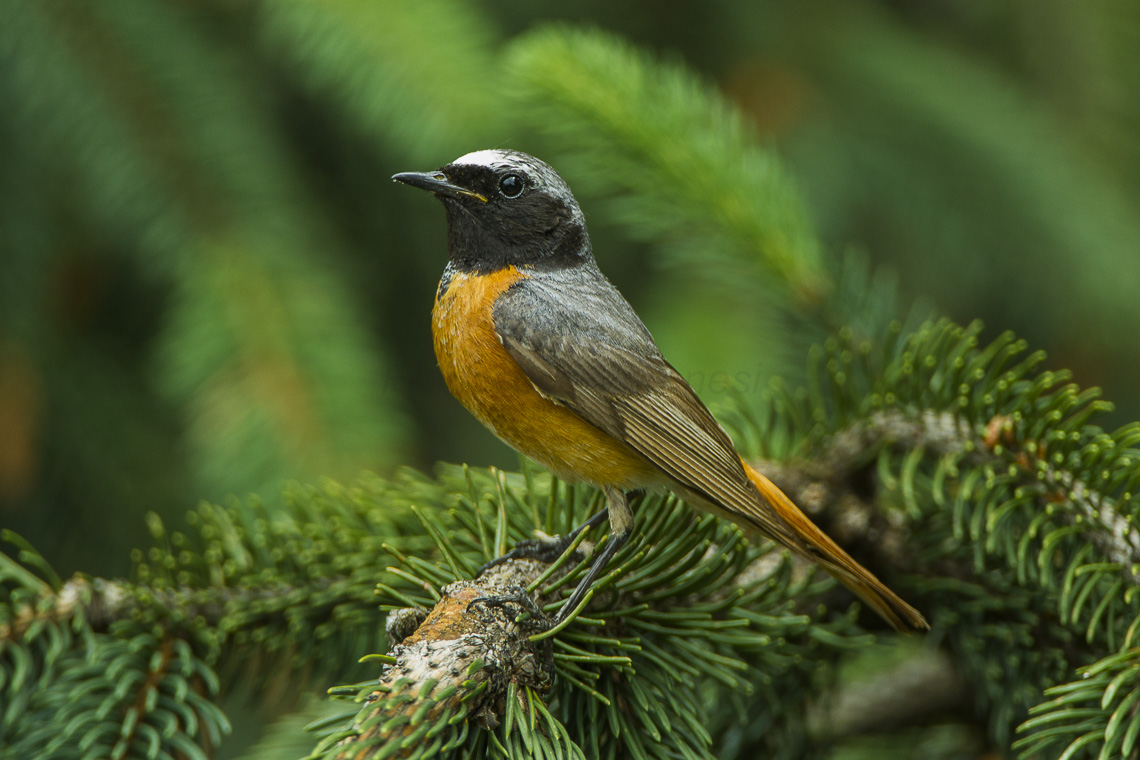Las ‘ave‘They bring emotions to people, health benefits and also to the economy. In addition to being indicators of well-being and health in the city, the ave They help control insect pests and disperse seeds. Daniel García, professor of ecology at the University of Oviedo, recently highlighted in the Natural forum of the capital of Santander Some of the economic benefits produced by the presence of ave.
People who love ave They will tell us that the observation of the ave and observing their behavior can evoke emotions such as calm, curiosity or pride at having witnessed a unique moment. however, the ave They not only bring emotions to people, but also generate several tangible benefits for a country’s health and even the economy.
The benefits that trees provide in cities are well known: reducing the level of pollution and purifying the air we breathe, lowering the ambient temperature thanks to the shade they produce, or reducing rainwater runoff and contributing to the purification thereof. But not only trees help society; thanks to scientific research we know that the jay, a forest bird that buries the fruits to feed on them later, contributes with this action to planting thousands of acorns per year, saving thousands of euros. include the purchase of acorns, production of seedlings and planting workers per year.
Daniel García, professor of ecology at the University of Oviedo and member of the BESLab (Biodiversity and Ecosystem Services Laboratory) explains how the richness of species, whether ave or plants, in a place is mainly related to the ecosystem services they produce, due to a complementarity effect. For example, by allowing vegetation to develop more or by helping birds disperse a greater number and variety of seeds.
Birds fight pests
In addition to the important role that ave They play a role in forest restoration thanks to their ability to disperse seeds whether they pass through their intestinal tract or not; others aveinsectivores, help keep our pests under control. García explains that the presence of well-structured hedges on the edges of cider apple plantations allows a large number and diverse species of insectivorous birds to live on the plantation, capable of controlling the main pests that attack the apple tree.
However, it is not the abundance of birds, but the diversity, that is, the largest number of different species, that determines a greater pest control effect. Because every kind ave acts as a natural enemy of another insect. Some of the most efficient species in this habitat according to their studies are; the blackcap, the blue tit, the blackbird, the thrush or the myth. Species with a wide distribution and quite common that combine insects and the fruits or berries that grow in hedgerows in their diet, thus dispersing their seeds.
Other species with a great ability to control insect pests are swallows and swifts, which are capable of eating 40,000 insects per day, mainly flies and mosquitoes. These species are closely linked to humans, because they make their nests on the facades of buildings in villages and towns and thus help the population in this biological control of flies and mosquitoes.
Attract birds
The best method to achieve these benefits for birds in an ecosystem does not involve releasing the specimens into the environment in which they wish to operate, as occurs with biological control with insects or with pollination by colonies of bumblebees into which they are released. tomato greenhouses. Rather, it is necessary to take measures to ensure good living conditions for the birds you want to attract. Mainly food, with the planting of hedges and trees that produce a variety of edible fruits, and shelter, with the installation of nest boxes in environments where there are not enough natural gaps in large trees.
Places like the city of Santander, where these types of measures have been applied over the last ten years, have made it possible to confirm the occupancy of 50% of nest boxes for songbirds, mainly tits and blue tits, out of a total of 575. . boxes scattered throughout parks and green spaces in the city.
How can I contribute to biodiversity from my home?
This question was asked by a participant at Daniel García’s conference, held last Friday in Santander, in the context of the Natural forum of the capital of Santander. “There is no better way than to use part of your terrace or balcony to plant native species and flowering plants or install a small bird feeder,” explains Ignacio Fernández, SEO/BirdLife technician, promoter of the Garden Network and Biodiverse Terraces or Santander from , which helps citizens implement small measures to attract pollinating insects and birds useful to the city.
This network already has 450 members, who actively participate in the construction of a biodiversity garden and terrace in the facilities of both city centers in Santander.
Santander capital of course
Santander capital of course is a project led by the Santander City Council, whose main objective is to strengthen the role of the network of urban green areas in the conservation of biodiversity at a local scale, and to promote environmental services that help improve the quality of life of the community of Santander . For this we count on strategic planning, citizen participation and the involvement of the Santander society.
This project will last until December 2025 and has as partners the Santander City Council, SEO/BirdLife, the Amica Association, the Climate Research Foundation and the University of Cantabria.
Santander Capital Natural receives support from the Biodiversity Foundation of the Ministry for the Ecological Transition and Demographic Challenge (MITECO) under the Recovery, Transformation and Resilience Plan (PRTR), funded by the European Union – NextGeneration EU.

